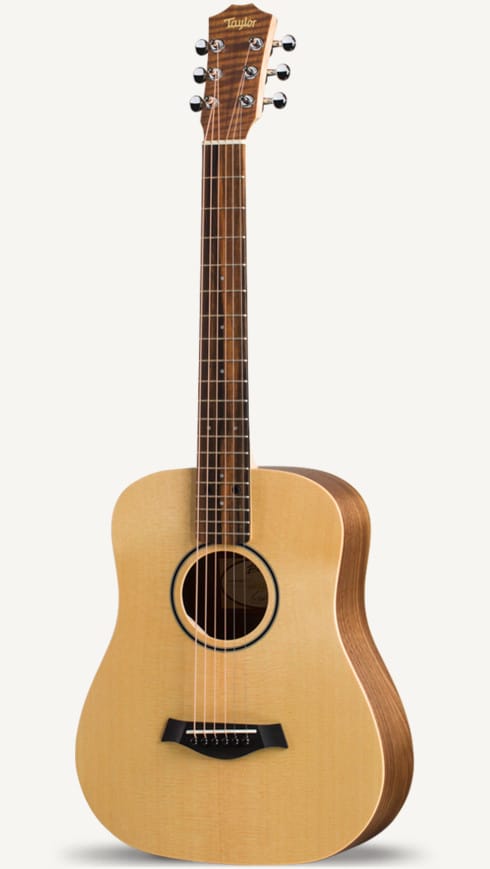Travel Guitar vs Guitalele: Things You Must Know
Discover the key differences between travel guitars and guitaleles to find your perfect portable instrument for on-the-go playing and travel.
In this world there are a LOT of options for playing guitar. Today, we are going to present some guidance on a few of those options - the difference between a "travel guitar" and a "guitarlele".
Choosing the right small-size instrument will make sure you don't waste money, help you travel more efficiently, and, most importantly, inspire you as you play.
Please remember, information here is based on our own personal usage. If you have any experience or information that you'd like to add, please make sure to include it in the comments below!
Questions we will be focusing on:
- What is a Travel Guitar?
- What is a Guitalele?
- Guitalele vs. Guitar: What's the fuss?
- Comparison with Reasons
- Reasons to pick and avoid a Travel Guitar
- Reasons to pick and avoid Guitalele
What is a Travel Guitar?
Picking a travel guitar takes into account different factors than picking a guitar for 'live' gigs or recordings.
Unlike if you are looking for a new acoustic or electric guitar, the best convenient guitars purchased for the travel won't generally be the ones that come with flashy highlights or premium segments.
Instead, there are different qualities that are important:

- Travel guitars are little guitars with a complete or almost full scale-length. Conversely, a diminished scale length is typical for guitars expected for youngsters, which have scale-lengths of one-half, three-quarter & one-quarter (guitalele or ukulele guitar)
- For the best travel guitars, you don't need to let go of the playability, the capacity to hold a tune, rich acoustic sound, or quality construction.
- There is a broad set of new acoustic guitars that make the best travel sidekicks, due to their lightweight, little size, and capacity to tolerate the rigors of air terminal security.
- They have a reduced neck length, which means fewer frets, which makes it hard to perform a traditional guitar solo, but for everything else, there is no problem.
- A travel guitar is embraced with the thicker woods in areas that can break while traveling.
What is a Guitalele?
A guitalele (sometimes spelled guitarlele or guilele), also knows as a kīkū, is a cross between an old-style guitar & a tenor or baritone ukulele & "a 1/4 size" guitar.
View on Amazon | Sweetwater | Thomann
It's tuned just like a regular guitar. The sound, with a capo at the 5th fret, is usually mentioned as being the same as that of a classical guitar.
Here are a few more specifics about guitalele's, including how they compare to the traditional ukelele:

- The guitalele combines the convey ability of a ukulele, because of its small size.
- Some even might have integrated microphones to connect with an amplifier.
- You can play the guitalele as an acoustic guitar.
- A guitalele size is parallel to a ukulele. It is played like a regular guitar. With the main four strings tuned like a low G ukulele, this gives it tuning of ADGCEA.
- Some companies utilize the term "6-string ukulele" in explaining their 6-string, 6-course guitaleles can project to a bit fussy with the common six-string, four-course ukuleles which are generally known to by the exact name.
- A single G string, these 4-course "6-string ukuleles" provide typically a closely spaced course of two A strings, single E string, & two C strings.
- Thus, the Guitalele is closer to a six-string guitar.
- And the chord formation is resembling a standard 4-string ukulele.
Top-Reviewed Guitalele
31" Mahogany Guitarlele/Mini Travel Guitar by Kmise
View on Amazon | Sweetwater

Guitalele vs Travel Guitar: What's the fuss?
What's the difference between a 'guitalele' and a 'travel' guitar? This is one of the most searched question by many users. There is, in fact, a key difference between the two:
- A guitalele is a ukulele sized guitar with six strings rather than the usual four, just like a travel guitar. However...
- Due to the small size, the low string on a guitalele is an "A" rather than an "E". The relative tuning stays the same.
- On a guitalele, the fingering for the chords will remain the same from the guitar, yet they will be transposed a 5th.
If you currently play guitar and are searching for a smaller, compact instrument, then both a guitalele or travel guitar can be a lot of fun to extend your collection.
Pros and Cons
Travel Guitar "Pro's":
- Comfort
- Freedom
- Efficiency
- Flexibility
Travel Guitar "Con's":
- Nothing in particular.
Guitalele "Pro's":
- Versatility in pitch, range, and soloing abilities
- Affordable
- Smaller and lighter than a regular guitar
Guitalele "Con's":
- For a few people, strings seem too close.
Conclusion
We have tried and loved both the travel guitar as well as guitaleles, so it depends on what your taste is. If we had to boil it down to a simple recommendation, it would be:
For smaller hands, guitalele is best. When it comes to the 'feel' of the regular guitar, go for the travel guitar.
We have tried to include in this article all the relevant details, and we do hope that you are going to enjoy and learn more!
Author’s Bio
Hi everyone! I am Rhythm Dhami, a modern guitarist and vocalist and everything in-between. A guitar player along with that of an experienced and inspiring entrepreneur.
More about me at: besttravelguitarguide.com

